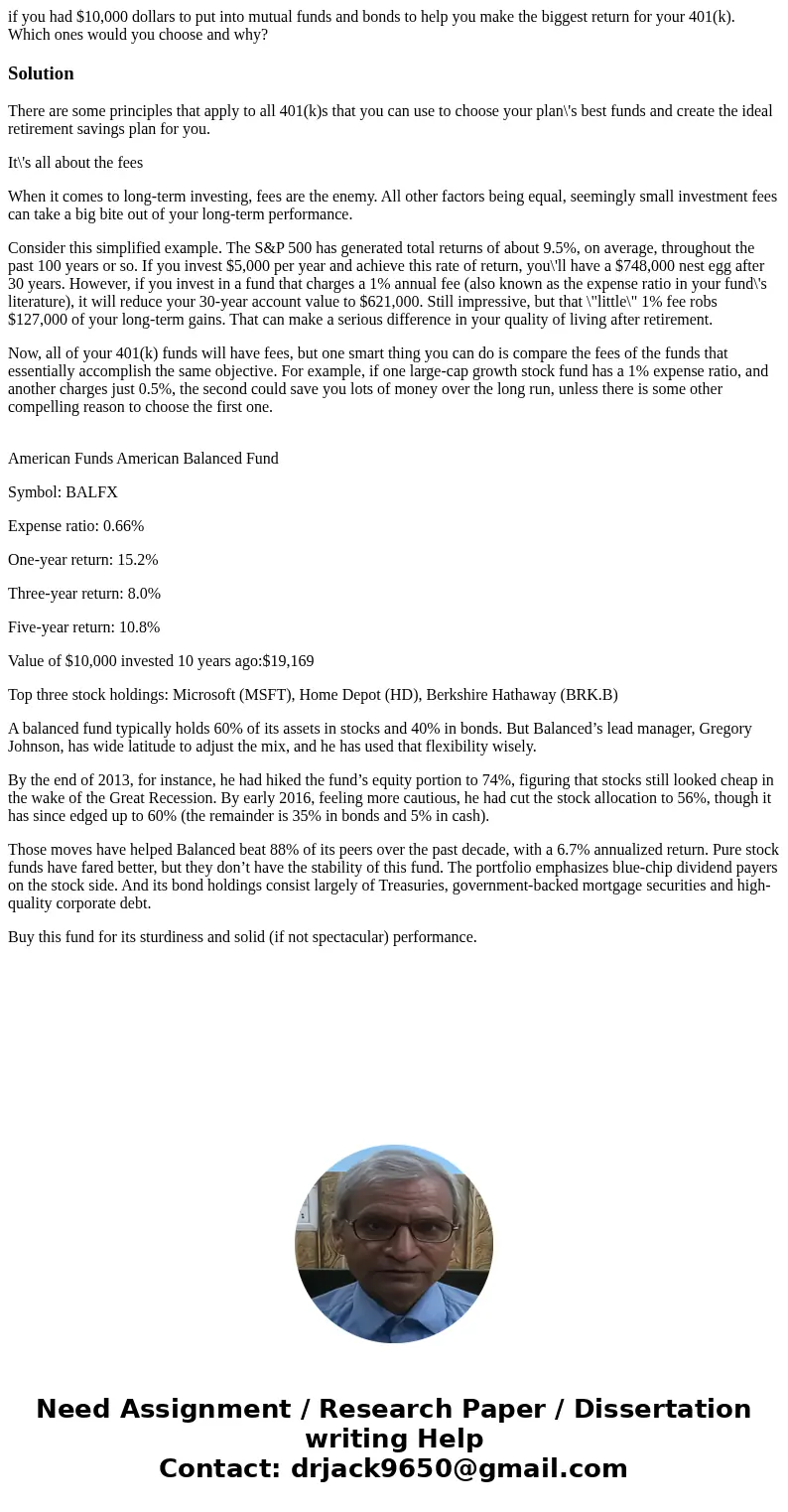if you had 10000 dollars to put into mutual funds and bonds
if you had $10,000 dollars to put into mutual funds and bonds to help you make the biggest return for your 401(k). Which ones would you choose and why?
Solution
There are some principles that apply to all 401(k)s that you can use to choose your plan\'s best funds and create the ideal retirement savings plan for you.
It\'s all about the fees
When it comes to long-term investing, fees are the enemy. All other factors being equal, seemingly small investment fees can take a big bite out of your long-term performance.
Consider this simplified example. The S&P 500 has generated total returns of about 9.5%, on average, throughout the past 100 years or so. If you invest $5,000 per year and achieve this rate of return, you\'ll have a $748,000 nest egg after 30 years. However, if you invest in a fund that charges a 1% annual fee (also known as the expense ratio in your fund\'s literature), it will reduce your 30-year account value to $621,000. Still impressive, but that \"little\" 1% fee robs $127,000 of your long-term gains. That can make a serious difference in your quality of living after retirement.
Now, all of your 401(k) funds will have fees, but one smart thing you can do is compare the fees of the funds that essentially accomplish the same objective. For example, if one large-cap growth stock fund has a 1% expense ratio, and another charges just 0.5%, the second could save you lots of money over the long run, unless there is some other compelling reason to choose the first one.
American Funds American Balanced Fund
Symbol: BALFX
Expense ratio: 0.66%
One-year return: 15.2%
Three-year return: 8.0%
Five-year return: 10.8%
Value of $10,000 invested 10 years ago:$19,169
Top three stock holdings: Microsoft (MSFT), Home Depot (HD), Berkshire Hathaway (BRK.B)
A balanced fund typically holds 60% of its assets in stocks and 40% in bonds. But Balanced’s lead manager, Gregory Johnson, has wide latitude to adjust the mix, and he has used that flexibility wisely.
By the end of 2013, for instance, he had hiked the fund’s equity portion to 74%, figuring that stocks still looked cheap in the wake of the Great Recession. By early 2016, feeling more cautious, he had cut the stock allocation to 56%, though it has since edged up to 60% (the remainder is 35% in bonds and 5% in cash).
Those moves have helped Balanced beat 88% of its peers over the past decade, with a 6.7% annualized return. Pure stock funds have fared better, but they don’t have the stability of this fund. The portfolio emphasizes blue-chip dividend payers on the stock side. And its bond holdings consist largely of Treasuries, government-backed mortgage securities and high-quality corporate debt.
Buy this fund for its sturdiness and solid (if not spectacular) performance.

 Homework Sourse
Homework Sourse